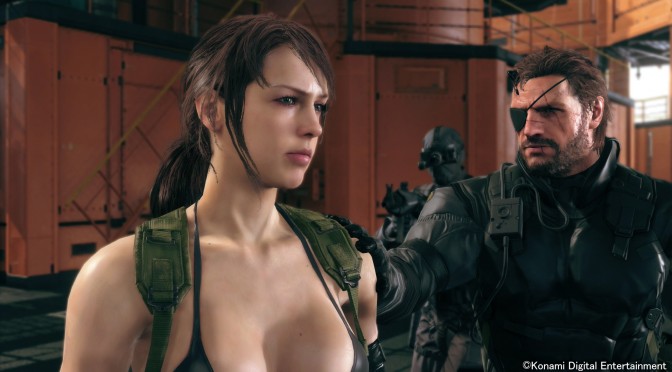Simplygon and Konami Digital today announced that Simplygon has been used in the creation of Metal Gear Solid V: The Phantom Pain. Over the course of production, Simplygon was used to process assets for all 42 levels including test data while delivering Level of Detail (LoD) models that optimized the polygon counts to help deliver a great visual experience.
Konami said:
“We used Simplygon to merge 100-400 assets into a single asset and we used those features to create assets displayed at mid-range from the player. Because we built the automated mid-range asset generation workflow using Simplygon, when we changed the assets layout, we were able to re-create mid-range assets with very low cost.
Simplygon saved the labor equivalent of 10 man months. The benefits are clear as we used the tool to reduce polygons as much as tenfold in models ranging from 5,000 to 100,000 polygons. The best result is that players can’t see the reduction because the models keep their fidelity at all distances which keeps the players immersed.”
Martin Ekdal, Co-founder and Vice President of Business Development at Simplygon, added:
“Konami are legends in the games industry and over the past three decades have been at the forefront of high quality games that truly excite players through their gameplay and visuals. With Simplygon we’re enabling creators to focus more on the creative parts of development while we automate multiple production processes and improve the performance.”
According to the press release, Simplygon is popular amongst developers of mobile games; AAA PC and console games; and large MMOs, and is applicable to any medium where 3D art assets are created or utilized.
By automatically generating lower-polygon models that are required for different levels of detail (LOD), an optimization process for making games and visual scenes run smoother, at higher frame-rates, and requiring less data, Simplygon helps digital content creators save important resources where artists would otherwise need to manually re-create large amounts of content.

John is the founder and Editor in Chief at DSOGaming. He is a PC gaming fan and highly supports the modding and indie communities. Before creating DSOGaming, John worked on numerous gaming websites. While he is a die-hard PC gamer, his gaming roots can be found on consoles. John loved – and still does – the 16-bit consoles, and considers SNES to be one of the best consoles. Still, the PC platform won him over consoles. That was mainly due to 3DFX and its iconic dedicated 3D accelerator graphics card, Voodoo 2. John has also written a higher degree thesis on the “The Evolution of PC graphics cards.”
Contact: Email

